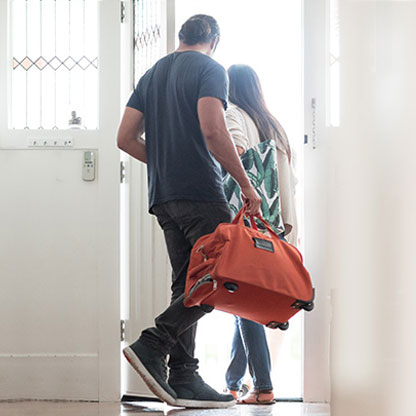There are some things you can do to lower the chances of something going wrong. Here are some maintenance tips for keeping your home and its surrounds safe.
1. Remove dead trees and foliage
Not only does this keep your yard tidy and safe, it can also help prevent damage from falling branches and reduce the risk of a fire spreading. If in doubt, professional arborists can help identify and remove dangerous branches.
2. Clear and clean the gutters
No-one’s favourite job – but an important one. This can help reduce rot and moisture as well as reducing the risk of a fire and gutters overflowing in wet weather. Always remember to be safe when working on roofs and ladders.
3. Check your roof
Keep an eye out for any cracks or movement of the tiles, or rusted areas if you have a colour bond roof. Any water that enters could overflow into the ceiling cavity and cause severe damage.
4. Inspect for any water leakage
Pipes can be hard to check for leaks as they’re secured within the walls, floors and ceilings. If you notice a sudden increase in your water bill, have to tighten the tap more than usual or notice any deterioration of grout, engage a plumber to investigate.
5. Check electrical outlets
Look for loose-fitting plugs, and avoid overloading electrical outlets. Also replace any frayed or damaged cords – these can result in electrical shocks and even cause fires.
6. Test your smoke alarms
With smoke often being the first warning sign of a household fire, it’s important to regularly check your fire alarms are in good working order. Change the batteries as part of a regular routine – for example, the first day of autumn and spring.
7. Check your water heater
Inspect your water heater for damage or corrosion. A rusty water heater can leak, increasing the risk of mould and water damage, not to mention reducing water quality in your home.
8. Inspect your foundations
Walk around your home to check for any cracks that may indicate a structural issue or problem with your foundations. If you find something, have a qualified tradesman conduct an inspection. You don’t want things getting any worse.
9. Check your flexi hoses
Your rubber flexi hoses are covered with stainless steel mesh which can potentially rust or leak – if you spot this, it’s time to replace them. Pressure running through the hose could cause any rusted mesh to break and the rubber hose to burst.




